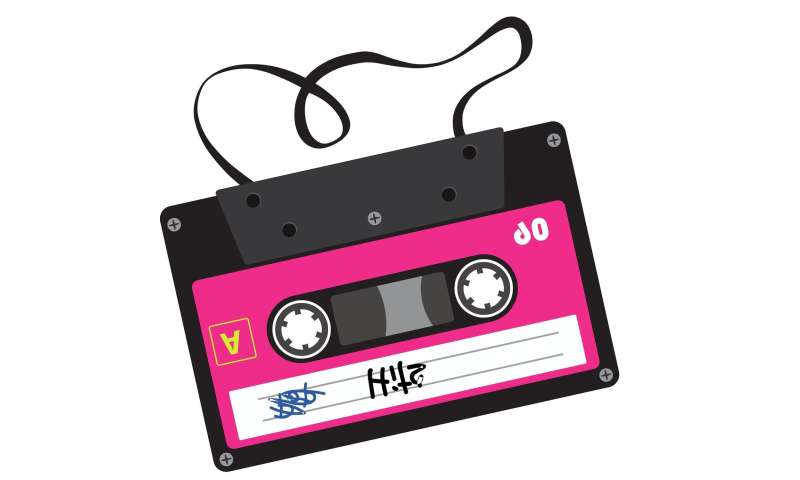Hacker brings video to audio cassette tape

Admit it. Somewhere in your basement or attic are dust-covered boxes filled with your Dad's old cassette tape music collection (your Mom is likely tidier and disposed of hers years ago.) Although last year there was an uptick in sales for audio cassettes at levels not achieved since the early 2000s, the format generally has been considered a useless relic of a long-gone era.
But one YouTube hacker begs to disagree.
Perhaps taking advantage of newfound free time afforded by self-isolation that has been imposed worldwide due to COVID-19, hacker Kris Slyka thought to himself: How can I put old audio cassette tapes from the Eighties to better use today?
So he applied his knowledge of Python and Java and found a new use for those 4.25" x 2.75" plastic cases packing up to 300 feet of magnetic tape. He repurposed them to record video.
It was no small feat. And while the video quality is not exactly high-def—in fact, it's quite low-def— the accomplishment remains impressive.
Today's high resolution video formats contain 8.3 million pixels and display 240 frames per second. Working with a format—magnetic audio cassette tape—bearing far greater constraints, Slyka was limited to a display of merely 100x75 pixels, a total of 7,500 pixels, and a speed of 5 frames per second. No one will be watching "The Avengers" or "Black Panther" on this format any time soon.
As one headline referred to the invention: "Hacker Figures Out How to Capture Horrible-Quality Video on Audio Cassettes."
Jokes aside, the accomplishment shows that with drive, determination and ingenuity, a spirited developer can make inroads in technology that were considered near impossible in earlier times. And we don't yet know what improvements or practical uses may lie ahead.
In fact, at least one earlier commercial effort to utilize audio tapes for video was made in the 1980s with the Fisher-Price PXL 2000 PixelVision camcorder designed especially for children. The toy proved to be a loser as video quality was abominable, even for audiences of five-year-olds.
Slyka's project accomplished higher-quality results. He was able to double the frame rate by interlacing images. He also was able to make use of the two tracks assigned to audio on cassette tapes by using one of the tracks to encode color instructions. The Fisher-Price camcorder was limited to black-and-white recordings.
Audio cassettes enjoyed immense popularity in the Eighties, propelled largely by the introduction of the Sony Walkman. For the first time, folks could listen to their favorite music outside their homes; unlike transistor radios, the Walkman allowed them to choose their own songs. Cassette players also contributed to the aerobic craze of the Eighties as physical fitness buffs discovered that listening to personal music compilations through stereo earphones made strenuous workouts more pleasurable. By 1989, 83 million cassette tapes were sold.
Fittingly, Slyka used a Sony tape recorder for his project. Last summer marked the 40th anniversary of the release of the first Sony Walkman.
While Slyka's creation has room for improvement, it at least gives us some consolation that those old, dusty cassette tapes may yet have a second life. And if not, they make great door st
More information: amplifoxed.bandcamp.com/album/side-a-one-day
No comments:
Post a Comment